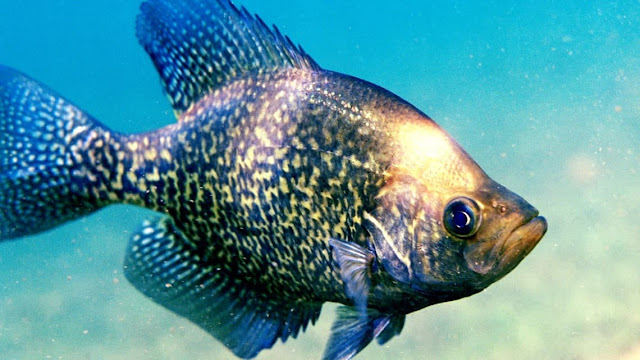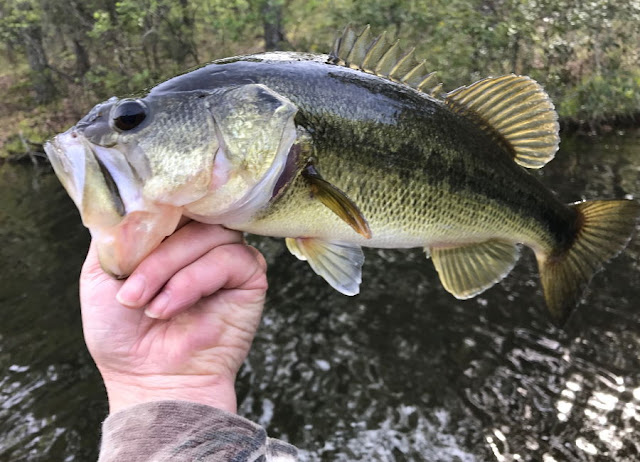How To Choose Crappie Baits
Crappie often bites when no one else is fishing. After all, they are the most overlooked game fish in America. The problem is there are many different "crappie strategies" which lead to success in catching these tasty panfish. There's no consensus on what works best, so don't feel bad if you have picked a crappie fishing strategy that doesn't pan out.
What works for some fishermen is certainly not going to work for everyone, but there are a few things all crappie anglers can agree on. First of all, don't be afraid to try something different from time to time. If you've been fishing with jigs and minnows, try a nightcrawler on a slip-sinker next time.
If your boat is equipped with an anchor, jig for crappie by slowly dragging the bottom with your rod tip high. The great thing about this technique is that you can cover areas without burning gas or wasting fishing time. Anchoring is also a good way to search for crappie in low-visibility water.
Crappie are normally very active when the sun comes up or when there is less cloud cover. Afternoon bite can be tough if you're fishing in sunlight, but try fishing near the dam or bridge pilings where it's dark and you can find crappie when other anglers are leaving.
If you like to fish with minnows, consider using a slip-sinker and bobber rig. This method requires small floats or bobbers that won't spook crappie. You don't need a heavy line for this setup, so use 6-pound test max. Whenever you spot a school of crappie, cast into the school and hold on!
Crappie are also less likely to spook if you're using ultralight tackle. If your setup is too heavy, it may reduce the number of bites you'll get. You can change up your bait or lure selection by switching out jigs or minnows.
Try something different every time you go fishing for crappie. You should experiment with depth, jigs vs. minnows, bobbers vs. slip-sinkers and other factors to see what works best in your area. Throwing different baits at the same spot is called "yo-yo fishing" and can result in your catching larger crappie.
If you are really into crappie fishing, try using live minnows or shiners. You can catch them by using a small hook or fly rod while ice-fishing for panfish. If you don't have the equipment for this tactic, buy some minnows or shiners at your local bait shop.
The best time to fish for crappie is when the crappie fishing conditions are ideal. Many species of panfish will bite during bright moonlight, but you can catch crappie in broad daylight if the water is cool enough (below 60 degrees F.). You'll need relatively clear water to see crappie.
If you can find a weedline, drop your line about 20 feet behind the weeds and pull up your rod whenever you feel a bump on your line. Your bobber should be sitting above the weeds, so this is one of the few times I would recommend a slip-sinker/bobber rig. After you catch a crappie, carefully return it to the water.
When Crappie Bait, use bobbers or small floats and cast near logs or other types of cover where you can find crappie. When using multiple poles and bobbers, let each line do its job. Don't move your float if you don't feel a bite.
Crappie can be found near submerged rocks, brush and grass. When you spot crappie on your depthfinder or sonar, bring up your anchor and try casting to these areas with live minnows. If the school of crappie is extremely large (more than 100 fish), find another nearby spot because you could spook them with a cast.
For crappie fishing live bait, try using a slip-sinker/bobber rig and let your line sink to the bottom. Cast directly into brush piles or other types of cover where you can find crappie and let your bobber rest on top of the structure. Use your rod to hold your bobber in place if necessary.
Crappie are often found on the bottom of a lake, but they may also suspend anywhere from two feet deep to several feet above the bottom. If you see signs of crappie on sonar or your depth finder , try anchoring and fishing with live bait to see if you can lure them to your boat. Crappie will often be found near the drop-off of a ridge or along the side of deep water where they can feed on minnows.
Crappie are often located in deeper water than other panfish because these cool-water fish don't like competition for food. You can find concentrations of crappie in deep water during summer months, when other panfish are in much shallower depths.
When you are fishing for crappie with minnows, use a slip-sinker/bobber rig and cast into weed beds or near submerged brush or logs. Your bobber should be about three feet above the cover. Once you feel a bump on your line, quickly raise the rod and catch the crappie with your hand.
When crappie fishing with a bobber, cast directly into weed beds or submerged brush piles. If you don't feel a bite after five seconds, reel in your bait and cast again to another area. This is called "yo-yo fishing" and will often result in catching larger crappie.
When you catch a crappie, immediately return it to the water because these panfish are easy to damage. If your female crappie has orange spots on its belly during spawning season (March through June), don't release it into the water because you can damage its eggs.
Many anglers prefer to use crappie jigs when fishing for these panfish. You should try to find schools of crappie on sonar, then drop a bottom rig with a jig into the middle of the school and reel it in rapidly. The vibration from your line may entice crappie to bite.
More social:
https://qiita.com/jamesfishing
https://fishinghackingcom.contently.com/
https://forum.cs-cart.com/user/157626-jamesfishing/
https://www.magcloud.com/user/jamesfishing
https://www.blogger.com/blog/posts/2091527538821839047
https://www.blogger.com/blog/posts/834381044484037509
https://teepepe.wordpress.com/
https://teepepe.mystrikingly.com/




Nhận xét
Đăng nhận xét